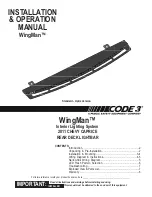
06
6-13
NOTICE
During cold weather, shifting may be
difficult until the transmission lubricant
has warmed up.
Using the clutch
The clutch pedal should be depressed all
the way before:
- Starting the engine
The engine will not start without
depressing the clutch pedal.
- Shifting into gear, up shifting to the
next higher gear, or down shifting to
the next lower gear.
When releasing the clutch pedal, release
it slowly. The clutch pedal should always
be fully released while driving.
CAUTION
To prevent unnecessary wear or
damage to the clutch:
•
Do not rest your foot on the clutch
pedal while driving.
•
Do not hold the vehicle with the
clutch on an incline, while waiting for
the traffic light, etc.
•
Always depress the clutch pedal
down fully to prevent noise or
damage.
•
Do not depress the clutch pedal
again until it is fully released.
•
Do not start in 2nd (second) gear
except when you are in slippery road
conditions.
•
Do not drive with cargo loaded more
than required loading capacity.
Downshifting
Down shift to a lower gear when slowing
down in heavy traffic or driving up a
steep hill to prevent high engine loads.
Also, downshifting reduces the chance
of stalling and helps reaccelerate the
vehicle when you need to increase your
speed.
When the vehicle is going downhill,
downshifting helps maintain safe speed
by providing engine braking (brake
power from the engine) and results in
less wear on the brakes.
NOTICE
To prevent damage to the engine,
clutch and transmission:
•
When downshifting from 5
th
gear to 4
th
gear, be careful not to
inadvertently push the shift lever
sideways engaging the 2
nd
gear. A
drastic downshift may cause the
engine speed to increase to the
point the tachometer will enter
the redzone and may cause engine
damage.
•
Do not downshift more than two
gear at a time or downshift the gear
when the engine is running at high
speed (5,000 RPM or higher).
Such down shifting may damage the
engine, clutch and the transmission.
















































